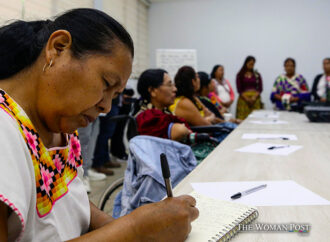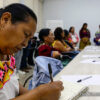Although the socioeconomic impact of the COVID pandemic was extensive to all of the world’s population, older women were significantly affected.
Although the socioeconomic impact of the COVID pandemic was extensive to all of the world’s population, older women were significantly affected. This was mainly due to their vulnerability to the social, economic, and health difficulties related to aging, particularly with economic disadvantages.
Several reasons explain why older women paid the highest toll during the pandemic. On the one hand, they have less access to land, housing, and other goods and lower chances of having a pension. They are also affected by the lack of public policies to address age-based discrimination, which affects them in a larger proportion than men in the same conditions. Various Gender Assessment Surveys by UN Women, evaluating the socioeconomic impact of COVID-19 and gender violence, have agreed that the pandemic has been a tough time for women over 60 years old.
The Women Post explains the main reasons for this phenomenon that requires the attention of public policy specialists:
1. Increased gender violence: It is no secret that violence against women has increased. UN Women recently mentioned that 45% of women know or have been victims of gender violence since the outbreak of COVID. Not to mention that even before the pandemic, one in every three women was a victim of sexual or physical violence by an intimate partner.
2. Difficulties in access to health: Even before the pandemic, almost 50% of older people in some developing countries lacked access to primary health care. Without a doubt, the pandemic made the situation more critical. According to UN Women, two in five older women faced complications accessing sanitary and health products, and a third had problems trying to find proper medical care. The lack of access to health is aggravated because older women are more vulnerable to chronic illnesses.
3. Economic insecurity: The results of surveys by UN Women revealed that 61% of older women reported an income reduction as a consequence of the pandemic, vs. 53% of women aged 18 to 24. Additionally, more than 50% of women over 60 years old reported reduced paid working hours.
Also read: 7 INEQUALITIES EXPERIENCED BY RURAL WOMEN
4. Increase in domestic and unpaid work: Although both men and women faced an increase in domestic work due to the pandemic, the situation for women was more complicated. 60% of women and 54% of men reported that they had increased the amount of time they devoted to domestic work since the outbreak of the pandemic, according to the UN Report “Whose time to care?” Surveys by UN Women also revealed that older women and men increased their unpaid care and domestic work.
5. Deficient coverage by government relief: Before the pandemic, women’s access to pensions was already insufficient, with only 26% covered, but the pandemic pushed the situation further. RGA data confirmed that the coverage for older women was limited to only 17% of women receiving unemployment insurance, compared to 30% of men.
Gender data plays an integral part in informing public policy specialists in ensuring that women have access to basic needs during a sanitary emergency such as the COVID-19 pandemic.
























Leave a Comment
Your email address will not be published. Required fields are marked with *